Get ready to immerse yourself in the world of backyard bird watching in Texas! This article presents a comprehensive guide to the most common backyard birds in the Lone Star State. Drawing on data collected through the citizen science program eBird, you can trust that this information is both accurate and reliable. Along with beautiful pictures showcasing each bird species, you’ll find valuable tips on attracting these feathered friends to your very own backyard. The article also provides additional resources for bird watching in Texas and handy tips on bird identification. So, grab your binoculars and get ready to discover the diverse avian wonders that call Texas home!
Northern Cardinal
The Northern Cardinal is one of the most iconic and recognizable birds in Texas. With its vibrant red plumage and distinctive crest, this bird easily stands out against the green foliage. The male is particularly striking, with its bright red feathers and black mask on its face. The female, on the other hand, has a more subdued coloration, with a grayish-brown body and reddish wings and tail.
Northern Cardinals are often found in woodlands, gardens, and urban areas throughout Texas. They are known for their melodious song, which can be heard throughout the day. They have a varied diet, feeding on seeds, fruits, and insects. To attract Northern Cardinals to your backyard, consider setting up a bird feeder with sunflower seeds or safflower seeds. They are also attracted to bird baths and shrubs for nesting.
Northern Mockingbird
The Northern Mockingbird is the state bird of Texas and is known for its remarkable ability to mimic the songs of other birds. With its grayish-brown plumage and white patches on its wings, this bird may appear unassuming at first glance. However, its vocal repertoire is unparalleled, and it can imitate the calls of over 200 different species of birds.
These birds are highly adaptable and can be found throughout Texas in a variety of habitats, including urban areas, forests, and grasslands. They primarily feed on insects, berries, and fruits. To attract Northern Mockingbirds to your backyard, provide a diverse range of foods, such as berries, fruits, and a mix of seeds. They are also attracted to bird baths for drinking and bathing.
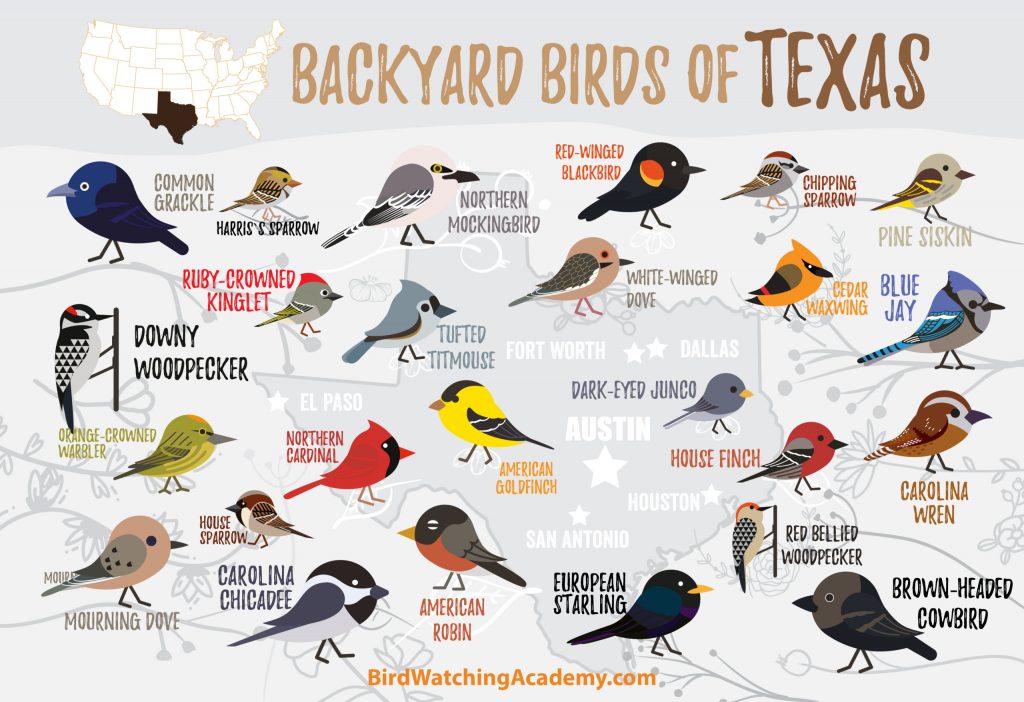
Mourning Dove
The Mourning Dove is a common sight in backyard bird feeders throughout Texas. With its soft, muted coloring and slender body, this bird may not stand out compared to its more flamboyant counterparts. However, its gentle cooing is a familiar sound in many neighborhoods.
Mourning Doves are highly adaptable and can be found in a variety of habitats, including open woodlands, fields, and urban areas. They primarily feed on seeds, especially those from grasses and weeds. To attract Mourning Doves to your backyard, scatter a mix of seeds on the ground or provide a platform feeder. They are also attracted to birdbaths for drinking and bathing.
White-winged Dove
The White-winged Dove is a common bird in Texas, especially in urban and suburban areas. With its pale gray body and distinctive white wing patches, this bird can be easily identified. They have a moderate-sized body and a long, rounded tail.
White-winged Doves primarily feed on seeds, fruits, and insects. To attract them to your backyard, provide a variety of seeds, especially sunflower seeds and safflower seeds. They are also attracted to bird baths and watering areas.
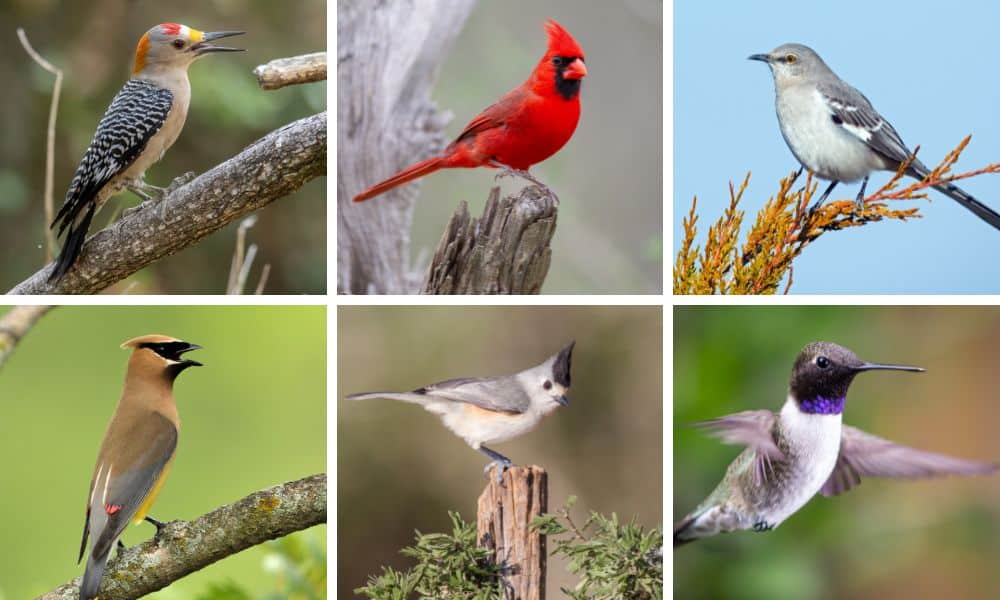
House Sparrow
The House Sparrow is a small, chunky bird with a conical bill and a brownish-gray body. Originally introduced from Europe, this bird has become one of the most common backyard birds in Texas. They are often found in urban and suburban areas, and their familiar chirping can be heard in many neighborhoods.
House Sparrows are opportunistic feeders and will eat a wide variety of foods, including seeds, grains, fruits, and insects. To attract House Sparrows to your backyard, provide a mixed birdseed blend, including millet and sunflower seeds. They will also appreciate bird baths for drinking and bathing.
Blue Jay
The Blue Jay is a large, striking bird with vibrant blue feathers on its back and wings and a white chest and underbelly. Their distinctive crest and black markings around their face make them easily recognizable. Known for their loud and harsh calls, Blue Jays are often heard before they are seen.
Blue Jays can be found in a variety of habitats in Texas, including woodlands, parks, and gardens. They have a varied diet, consisting of seeds, nuts, insects, and even small vertebrates such as frogs and lizards. To attract Blue Jays to your backyard, provide a mix of seeds, nuts, and suet. They are also attracted to bird baths for drinking and bathing.
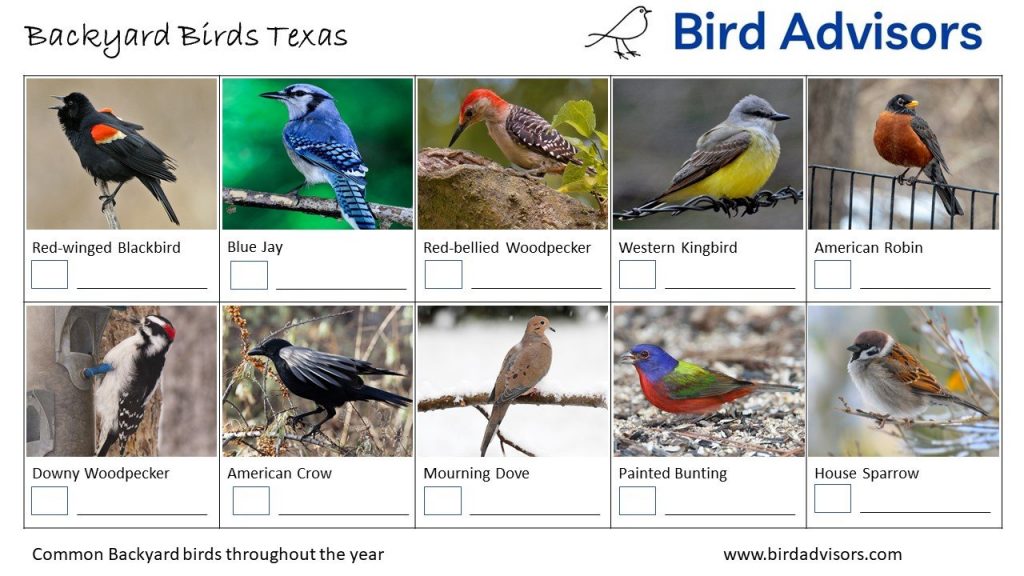
Carolina Wren
The Carolina Wren is a small bird with a compact body, a reddish-brown back, and a creamy-colored underbelly. Despite its small size, this bird has a loud and melodious song that can be heard throughout the day. They are often found in woodlands, backyards, and parks.
Carolina Wrens primarily feed on insects, spiders, and small invertebrates. To attract them to your backyard, provide shrubs and dense vegetation for nesting and foraging. They are also attracted to bird baths for drinking and bathing.
Carolina Chickadee
The Carolina Chickadee is a small bird with a black cap and bib, a gray back, and a white underbelly. They are often found in woodlands, parks, and suburban gardens. Known for their distinctive “chick-a-dee-dee-dee” call, these birds are lively and agile.
Carolina Chickadees primarily feed on insects, seeds, and berries. To attract them to your backyard, provide a variety of seeds, especially sunflower seeds. They are also attracted to bird baths for drinking and bathing.
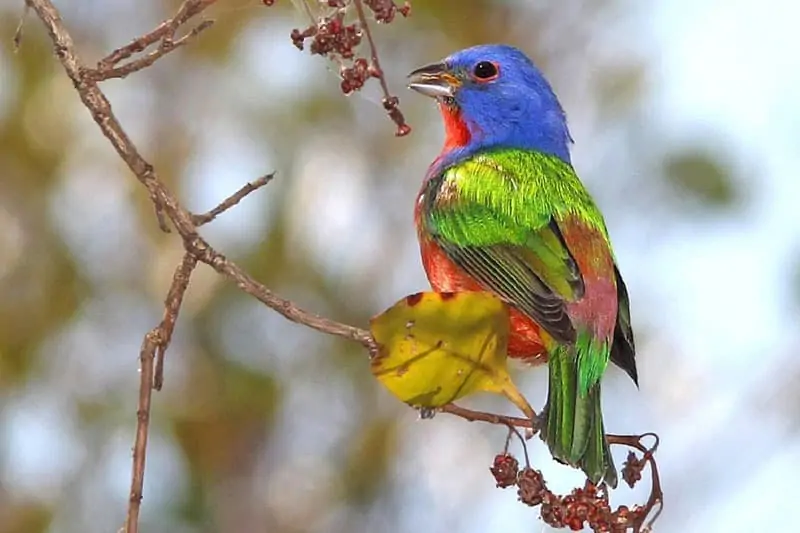
American Goldfinch
The American Goldfinch is a small, bright yellow bird with black wings and a black cap. During the breeding season, the male develops a striking black forehead and black wings with white wingbars. They are often found in open fields, meadows, and woodlands.
American Goldfinches primarily feed on seeds, especially those from thistles and other composite flowers. To attract them to your backyard, provide a thistle feeder with nyjer seeds. They are also attracted to bird baths for drinking and bathing.
Tips on Bird Identification
Use Field Guides
When trying to identify birds, a field guide can be a valuable tool. Field guides provide detailed descriptions and illustrations of various bird species, making it easier to identify them. Look for a guide that is specific to your region, such as “Birds of Texas” or “A Field Guide to North American Birds.” These guides often include information on habitat preferences, behavior, and vocalizations, which can further aid in identification.
Observe Key Characteristics
When attempting to identify a bird, focus on its key characteristics. These may include its size, shape, coloration, markings, and behavior. Pay attention to the bird’s overall silhouette, the shape and length of its bill, the pattern of its wings and tail, and any distinctive markings or color patterns. Also, observe the bird’s behavior, such as how it flies, perches, and feeds. These observations can provide important clues for identification.
Record Your Observations
Keeping a birding journal or notebook can be helpful in improving your bird identification skills. Take notes on the key characteristics you observed, along with details about the bird’s habitat, location, and behavior. You can also sketch the bird or take photographs to refer back to later. Over time, you will develop a better understanding of bird identification and be able to recognize different species more easily.
In conclusion, Texas is home to a diverse array of bird species, including the Northern Cardinal, Northern Mockingbird, Mourning Dove, White-winged Dove, House Sparrow, Blue Jay, Carolina Wren, Carolina Chickadee, and American Goldfinch. Understanding their characteristics, habitats, and behaviors can help attract these birds to your backyard and enhance your bird-watching experience. So grab your field guide, binoculars, and bird feeder, and start exploring the fascinating world of birds in Texas!
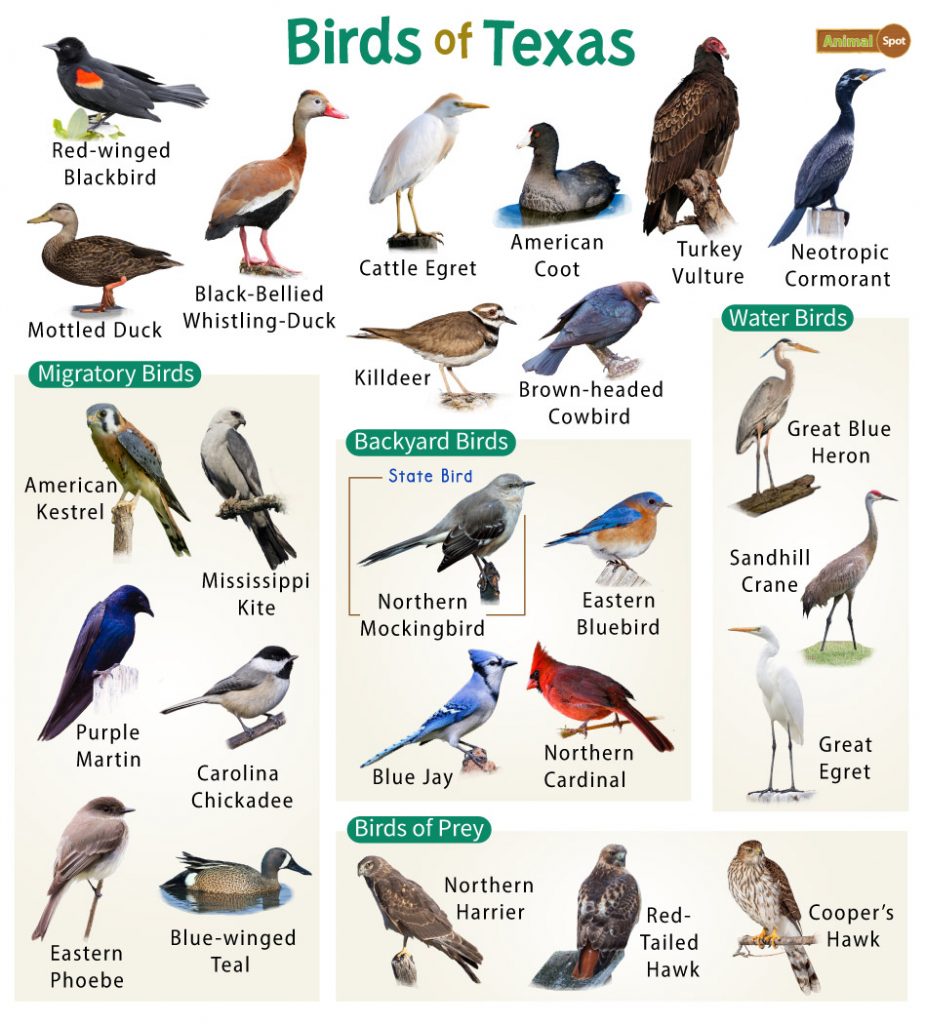
Leave a Reply